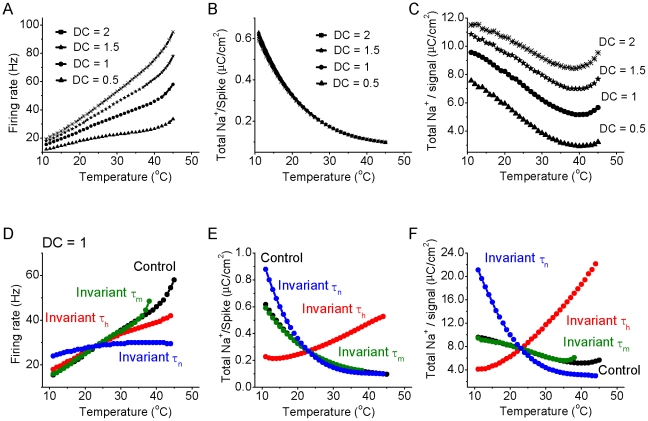Figure 6. Effect of temperature on firing rate and total energy usage for the cortical model neuron in response to different intensities of DC input.
A. The firing rate of the model neuron increases as a function of temperature for DC = 0.5, 1, 1.5 and 2×10−2 pA/µm2 (500 ms duration) respectively. B. The total sodium charge entering during one action potential decreases exponentially as a function of temperature for DC = 0.5, 1, 1.5 and 2×10−2 pA/µm2, respectively. C. For the conditions in the above four DC inputs, the total sodium charge (sodium charge per spike times the firing rate) for a given DC signal as a function of temperature. Note that the total Na+ entry reaches a minimum at a temperature of between 37–42°C. D. The firing rate increases as a function of temperature for the normal situation (black), and when τm (green), τh (red) and τn(blue) are kept invariant. Notice that the IK activation time constant τn is the key factor controlling the firing rate change as a function of temperature. E. For the above four situations, the total Na+ charge per single spike as a function of temperature. Notice that INa inactivation time constant τh is the key factor controlling the total Na+ charge per spike as a function of temperature. F. For the above four situations, the total Na+ charge per DC input (nC/cm2) as a function of temperature. Note that the total Na+ entry does not go through a global minimum for both test groups with temperature-independent τh and τn.

